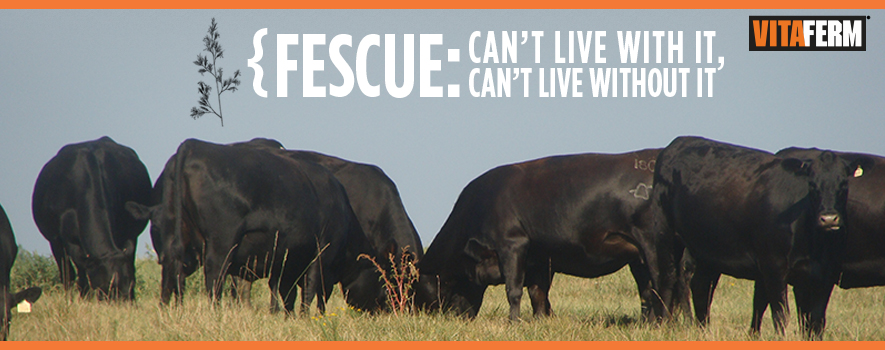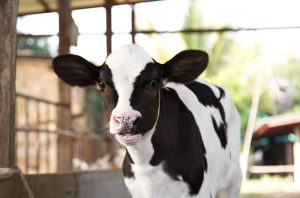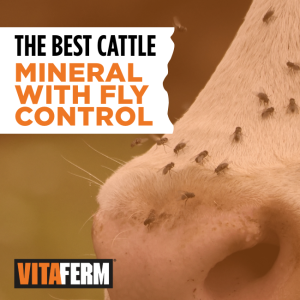 Grass is a key component in any grazing operation, especially in the summer. Tall fescue is the most widely adapted forage in the U.S. It is a persistent grass that is easy to establish, tolerant of a wide range of management regimes, and produces good forage yields. However, it is a relatively low palatability forage that can also result in poor animal performance.
Grass is a key component in any grazing operation, especially in the summer. Tall fescue is the most widely adapted forage in the U.S. It is a persistent grass that is easy to establish, tolerant of a wide range of management regimes, and produces good forage yields. However, it is a relatively low palatability forage that can also result in poor animal performance.
It is estimated that over 90% of all fescue pastures in the U.S. are infected with the fungus endophyte that has been shown to adversely impact cattle performance. The organism, located within the plant, does not affect the growth or appearance of the grass and requires a laboratory analysis to detect. Fortunately, the endophyte is only transmitted by seeds.
The three general problems associated with animals grazing endophyte-infected tall fescue are fescue foot, fat necrosis and fescue toxicosis.
- Fescue foot is a condition in which there is insufficient blood flow to the extremities and generally occurs in the winter months. Cattle with fescue foot usually become lame and potential sloughing off of the hoof may follow. The tips of the tail and ears may also be lost.
- Fat necrosis is the development of hard fat deposits in the abdomen that can interfere with digestion or parturition. Fat necrosis, along with fescue foot, is a relatively infrequent occurrence.
- Fescue toxicosis is a multifaceted syndrome that is the most common complication when grazing infected fescue. Cattle experiencing fescue toxicosis may exhibit rough hair coats, heat stress, suppressed appetite, poor growth or reduced calving rates. It is expected that for every 10% increase in endophyte levels, a 0.1 pound decrease in ADG may be seen.
There are multiple methods to manage the fescue endophyte. These may include:
- Establishing a new stand. There are many low- to no-endophyte seeds available.
- Diluting the endophyte. Dilute the endophyte through the use of legumes or other grasses.
- Grazing and/or clipping pastures. Keeps the plant young and in the vegetative stage. If the plant doesn’t come to head, then the endophyte can’t multiply.
- Avoiding the endophyte species. Use other forage species besides fescue.
BioZyme® recognizes the challenges producers face when grazing fescue and combating summer heat simultaneously, and has developed a mineral option to combat these problems. VitaFerm® HEAT is a vitamin and mineral supplement that contains the prebiotic Amaferm®, extracts of clove, cinnamon and chili pepper, as well as garlic to allow for enhanced animal performance and feed utilization during heat stress and fescue forage situations.
Here is how VitaFerm Heat works:
- Improved Intake. Physical factors such as high fiber content of forages are often associated with poor intake, but forage digestibility and crude protein levels are similar in endophyte-infected versus endophyte-free fescue. Therefore, differences in performance on fescue pastures are strictly dependent on differences in intake. Amaferm can address this intake issue by stimulating animals to eat more consistently, consequently resulting in improved intake. Capsaicin, the natural form of chili pepper, also increases intake by allowing the animal to eat smaller meals more frequently throughout the day.
- Improved heat tolerance. Both Amaferm and Capsaicin are research-proven to lower core body temperature, allowing cattle to better combat heat stress and hyperthermia (above normal body temperature) commonly seen with fescue toxicity.
- Insect control. Added garlic to deter insects and make HEAT even better suited as the go-to summer mineral.
Fescue pasture is a necessary evil that many producers around the U.S. are forced to utilize for grazing throughout the year. Mismanagement of fescue, coupled with the added stressors of heat and insects, can leave producers with disappointing performance in the summer months. Providing cattle with a vitamin and mineral supplement while grazing fescue, and following a few simple recommendations to manage the fescue endophyte, your cattle will be on their way to enjoying a productive and stress-free summer.


